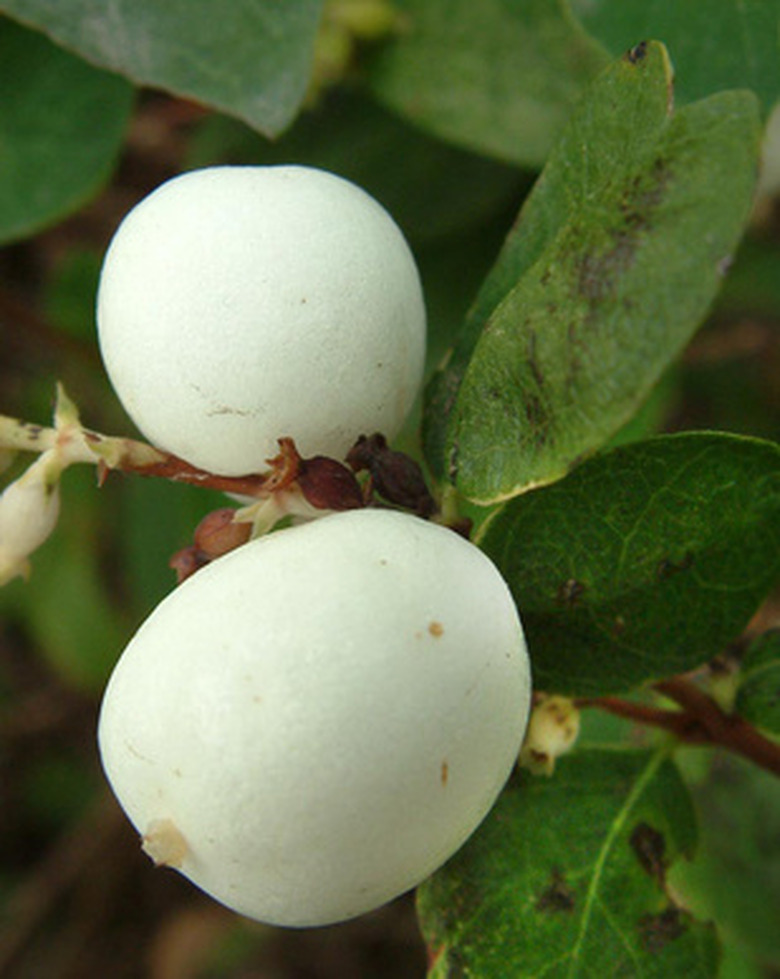Shrubs With White Berries
Several shrubs with white berries are used for landscaping; the aesthetic effect is a pleasant one, as the white berries contrast nicely with the foliage. Shrubs in general are hardy throughout the growing season, and, depending on the shrub, even into the fall and winter. Most shrubs are low-maintenance, requiring fertilizing once per year and minimal pruning.
Redosier Dogwood
The Redosier dogwood produces white berries and small, white flowers. The bark is dull red. If you do not prune for shape, this shrub must be pruned back every three years so that it keeps the bark color. Several cultivars exist, including the Baileyi and the Cardinal. The Baileyi has larger branches that are brownish-red rather than dull red. The fruits are light bluish instead of white. The Cardinal has brighter twig color, but has poorer fall color than the other cultivars. The Cardinal's berries are white, as are the Siberian's berries. Redosier dogwoods grow in USDA hardiness zones 2 through 7, and prefer full sun (more than 6 hours of continuous sunlight per day).
- Several shrubs with white berries are used for landscaping; the aesthetic effect is a pleasant one, as the white berries contrast nicely with the foliage.
- Redosier dogwoods grow in USDA hardiness zones 2 through 7, and prefer full sun (more than 6 hours of continuous sunlight per day).
Trailing Snowberry
The trailing snowberry is native California shrub. It is found outside California, but only grown in western North America. It is also known as the creeping snowberry. This shrub is abundant in the Yellow Pine Forest, the Lodgepole Forest, and the Red Fir Forest. The trailing snowberry spreads by trailing stems that grow along the ground. Its white berries grow on the shrubs throughout the winter.
White Berry Nandina
The white berry Nandina grows in USDA hardiness zones 6 to 9. It is an evergreen shrub with a moderate growth rate. The white berry Nandina prefers well-drained, moist soil, and grows up to 6 feet in height if left unpruned. During the spring, the white berry Nandina produces white flowers and creamy, white berries. The foliage does not have the red tint that most other nandinas have, and turns yellow-green during the winter.
- The trailing snowberry is native California shrub.
- The white berry Nandina prefers well-drained, moist soil, and grows up to 6 feet in height if left unpruned.
